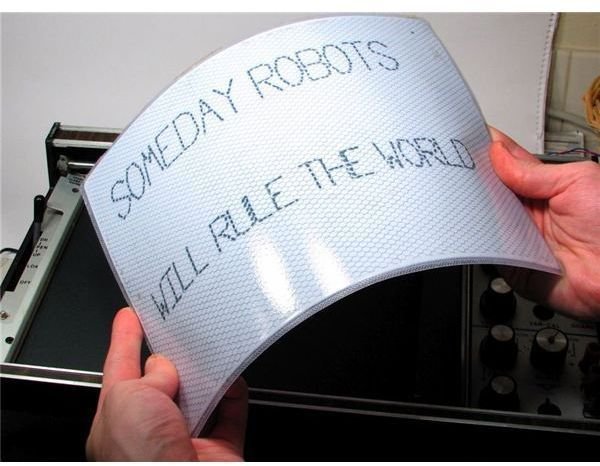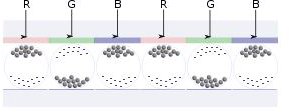Electronic Paper Technology: Disposable E-Paper is a Terrible Idea
Electronic paper (e-paper) or electronic ink is a new display technology that has recently been developed and is starting to gain popularity within the display market. Conventional displays emit their own light in order to make the panel readable. On the other hand, e-paper is designed to mimic real paper by reflecting the ambient light.
E-paper has a series of advantages compared to rigid displays. These include the wide view angle, reflecting instead of emitting light, and the ability to retain the images without constant refreshing or consuming more power. Flexible electronic paper can be produced using organic electronics and plastic substrates.
E-Paper Reader and Flexible E-paper

Electrowetting and the Paper-based E-paper
The most common procedure followed to create images on an e-paper is electrowetting (EW). This involves the application of an electric field to colored droplets (usually titanium dioxide particles). The dark-colored dye is added to oil along with other agents and then placed between two parallel, conductive plates. The application of voltage makes the particles move to the plate bearing the opposite charge from that on the particles.
Although popular e-readers rely on a circuitry printed on rigid glass, A. Steckl, an electrical engineering professor from the University of Cincinnati, discovered that it is possible to use paper as a substrate for the development of e-paper. He also discovered that the performance of a paper-substrate device is equivalent to that of a glass-substrate device.
The breakthrough here is not only the low cost and good performance, but also the possibility of disposing and even recycling this e-paper.

Disposing of E-paper - Is it Worth it?
Disposable e-paper readers are actually a great innovation. Researchers claim that paper-based e-readers are perfectly disposable and have minimum environmental impact. The recycling procedure followed is more or less the same with the one followed for traditional paper.
However, even if we do accept that e-paper is truly as recyclable as real paper, a series of questions arise. First of all, no one knows for certain whether the recycling procedure is also as inexpensive as the one for the traditional paper. A higher cost would make the whole idea of recycling unappealing. Secondly, recycled paper is less useful than the original and this could result in a gradual degradation of the e-paper quality and low performance.
Finally, many will doubt that a limited-time-use e-paper device is actually beneficial. People are probably more interested in using such a device indefinitely, otherwise they may think of it as a pointless and expensive substitute for paper.
Sources:
- “Electrowetting Breakthrough May Lead to Disposable E-Readers Fast Enough for Video” by Science Daily
- “Making Disposable Dynamic Displays With Electronic Ink on Real Paper” by Wired.com
- [“Flexible E-Paper on Its Way”](/tools/Flexible E-Paper on Its Way) by Wired.com
Image Credits:
